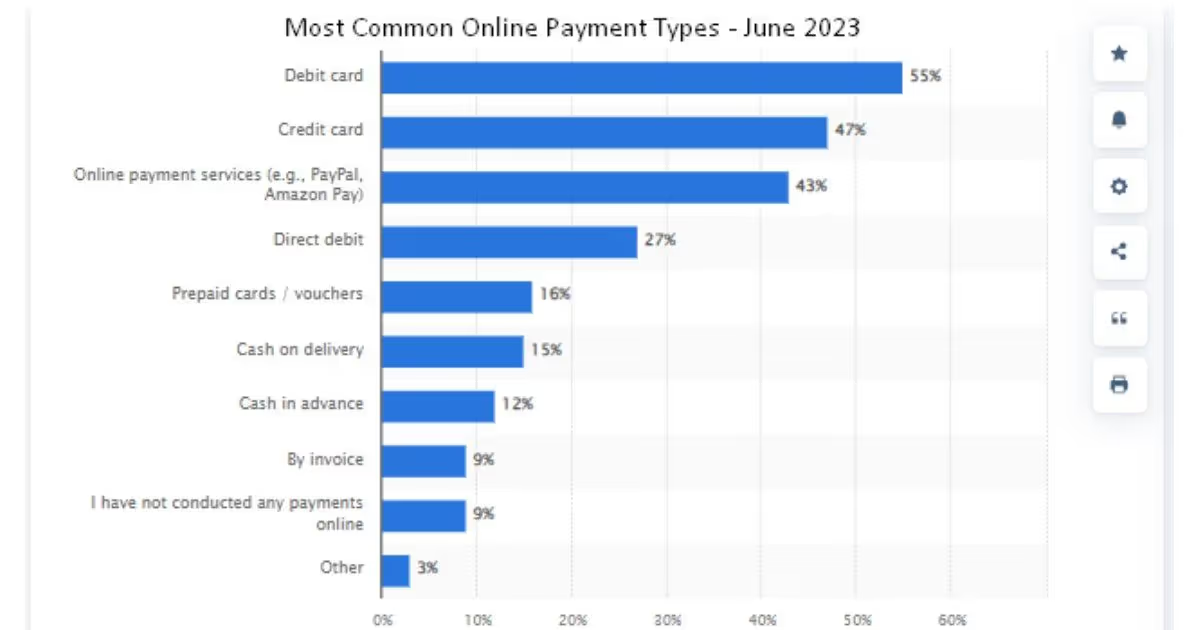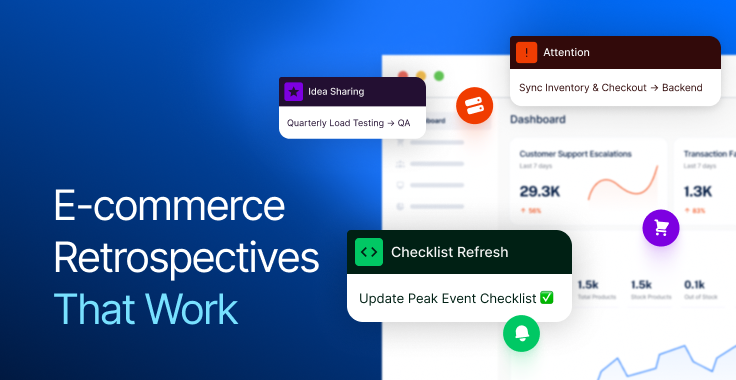If retailers provide a complex or frustrating shopping experience, customers are likely to seek alternatives. Even if a purchase is completed, a negative encounter reduces the chances of repeat business. In certain instances, it could even result in negative reviews, deterring potential customers from your e-commerce store.
The difference lies between having 'an online store' and having 'an online store that delivers an exceptional user experience.' It is crucial for every business owner to prioritize the latter, and we're here to help you steer clear of common eCommerce mistakes and lead you toward achieving it.
To help you chart a course to e-commerce excellence, we've compiled a comprehensive guide on the 8 Common e-commerce mistakes to Avoid in 2024.
1. Poor Quality Product Images

Using low-quality or outdated images often discourages customers from making a purchase. It is vital to use juicy, high-quality images (or even short videos) that accurately represent the product.
Imagine you're browsing an online clothing store, and you come across a beautiful dress with a poorly lit, pixelated image that doesn't provide a clear view of the fabric or fit. The image lacks detail, making it challenging to assess the quality and appeal of the dress. In contrast, another online store showcases the same dress with high-resolution images that allow you to zoom in for a close look at the fabric's texture, color, and overall design or ecommerce design mistakes.
In this scenario, the store with high-quality images is more likely to capture your trust and prompt you to make a purchase.
2. Lack of Information About the Product

Providing insufficient product information can lead to customer confusion and, ultimately, order cancelation and customer loss. Your job is to specify the product in as much detail as possible:
- Brand & exact model name
- Size & sizing charts
- Material & color
- Product features & advantages
- What product is best suited for
- Real-life customer reviews (ideally with pictures of delivered and unpacked products)
A prime example of effective product descriptions can be seen with Wayfair, one of the world's largest online-only home goods retailers, boasting over 3,800 employees and serving 36 million active customers. Their success is partly attributed to their skillful use of storytelling in product descriptions, allowing customers to envision how the product might enhance their living spaces.
Pro Tip: For the best experience, you can leverage Product Information Management (PIM) systems like Agility PIM, Precisely EnterWorks, and similar solutions. PIMs enable users to store, enrich, and manage complex product information. PIM tools centralize product-related data, streamlining the process of updating and managing accurate information across multiple sales and marketing channels.
3. Complicated Navigation
“As with most things in life, the key to success is simplicity.”
A confusing or cluttered website can make it difficult for customers to find what they are looking for and may cause them to leave. Your website should be intuitive and easy to use for everyone, including non-tech-savvy shoppers.
According to Baymard, 83% of websites mishandle "Sales" or "Deals" filter categories. Users often seek discounts, whether immediately or after browsing. Implementing a filter for "Sales" or "Deals" is crucial for efficiently assisting these users. However, the way this filter is implemented is critical.

For example, at Lowe's, finding all sale appliances can be challenging, leading to confusion, as the "Appliance Special Values" list may appear to represent all appliances.
In contrast, Walgreens' "Sales & Offers" filter in the "Beauty" category allows easy switching between narrowed and broader product selections. Therefore, "Sales" should function as a filter, not a separate sort. Nevertheless, 83% of websites make this mistake.
4. Lack of Trust Signals

The success of eCommerce heavily relies on the trust built between buyers and sellers. Trust signals play a pivotal role in enhancing this trust, including:
- Customer testimonials
- Payment security trust badges
- Live chat support
- Clear shipping and return policies
The absence of these trust signals can trigger doubts in buyers regarding the website's security, potentially deterring them from making a purchase. Byamard's 2023 research findings regarding "Which online payment badge inspires the highest level of trust" closely mirror our previous results. The SSL seal provided by Norton continues to stand out as the most effective badge in instilling a sense of trust, with three trust seals trailing behind, while some of the SSL seals exhibit notably lower performance.
Once a customer has already decided to make a purchase, their confidence can be further bolstered by confirmation bias, particularly when complemented by these trust signals.
Imagine you're enthusiastic about acquiring a relatively pricey item, such as a high-end camera lens, a premium kitchen appliance, or a cutting-edge smartphone. The financial commitment involved naturally brings about some apprehension. Now, envision visiting a website selling your desired item and encountering a trust signal like the Verified by Visa logo on the checkout page (a pivotal moment when many online shopping carts are abandoned).
This logo signifies that a major financial services provider will protect your transaction from fraud, providing substantial reassurance to someone who has already committed to investing a significant amount in a valuable item.
5. Slow Loading Times

As years of experience have shown, extreme speed and high quality are the principles by which customers choose their favorite online store. This is especially true for mobile shoppers. Slow loading times can frustrate customers and cause them to search for products on another website.
If your page speed is subpar, customers may not wait for it to load and could leave to search for a faster website. According to Google’s research, the probability of a user leaving a website (bounce rate) increased by 32% when it took 1-3 seconds to load a page, by 90% when it took 1-5 seconds, and by 123% when it took more than 10 seconds to load a page.
A variety of factors influence website loading times, including, but not limited to: poorly written code, poorly optimized media and external content (such as uncompressed images and videos), an abundance of HTTP requests, ineffective caching, poor hosting, old browsers, and more. Unoptimized images, along with an excess of widgets and plugins, are often the common culprits.
Pro Tip: Improve your website's load time by compressing images and utilizing a Content Delivery Network (CDN) or by using Cloudflare services to enhance the security and performance of your websites.
6. Lack of Mobile Optimization

Mobile commerce sales experienced significant growth in 2020, surging by 18% compared to the previous year, largely driven by the impact of COVID-19 and the increasing preference for online shopping.
The enduring effects of the pandemic have had a lasting impact on long-term mobile e-commerce trends, with retail m-commerce sales projected to reach $415 billion in 2022. This consistent growth trajectory appears to be assured. According to forecasts, this figure is expected to nearly double, reaching approximately $710 billion by 2025.
With over half of all purchases happening on mobile, mobile optimization emerges as a critical strategy. This involves tailoring your digital content for mobile devices, ensuring that your websites are mobile-friendly, and enabling mobile users to effortlessly access and engage with your site's content.
Amazon sets a good example; whether you access it from a laptop, cell phone, tablet, or various Android and Apple devices, the site functions smoothly. This seamless experience is a direct result of Amazon's commitment to mobile optimization. If your online store appears unattractive and proves challenging to navigate on mobile devices, your business risks losing a significant portion of potential mobile sales.
7. Limited Payment Options

Offering a limited range of payment choices can be a significant deterrent for potential customers. Statistics reveal that 9% of online shoppers are inclined to abandon their shopping carts if the checkout process lacks their preferred payment options.
According to Statista's 2023 survey, the top two online payment types in the U.S. are "Debit card" and "Credit card." The survey gathered responses from 10,011 U.S. participants online. Statista Consumer Insights offers results from our extensive surveys, based on over 2,000,000 interviews.
To cater to the diverse preferences of your customers, it is crucial to provide a wide array of payment options, including credit/debit cards, e-wallets, net banking, and cash-on-delivery.
Here are some popular payment options:
- Amazon Pay
- Google Pay & Apple Pay
- PayPal
- Stripe & Link Pay
- Shop Pay
Integrating these most popular payment methods into your checkout process can significantly improve the overall customer experience.
8. Poor Customer Service

Delivering an exceptional customer experience is more challenging than it might seem. While approximately 80% of companies believe they provide top-notch customer service. A mere 8% of their customers share this belief. One crucial aspect to remember is that you don't get second chances in this competitive landscape. There is an abundance of alternatives available to customers, which, while beneficial for consumers, can pose a challenge for businesses.
Your audience is well aware of the options at their disposal, and as a result, their expectations are higher than ever. Studies indicate that after just one poor experience, 51% of today's consumers will never consider doing business with that company again. Once a customer is lost due to a negative encounter, they are essentially lost forever, underscoring the critical importance of perfecting the initial customer experience or journey.
Neglecting customer service not only leads to dissatisfied customers but also results in negative reviews that can tarnish your reputation. Investing in features like live chat or chatbots can also be an effective strategy for providing immediate customer service, further enhancing the overall customer experience.
Boost Your eCommerce Growth
As the eCommerce arena becomes increasingly competitive, even small mistakes can have significant impacts. To ensure the prosperity of your online store, it is vital to educate yourself on the mistakes of others and steer clear of repeating them.
At Magebit, we can help your online store stay ahead of the competition, utilizing proven tactics for eCommerce success.
Final Thoughts
Frustrating shopping experiences, inadequate product information, and complicated navigation can swiftly drive customers away, contributing to common eCommerce mistakes. Trust signals and mobile optimization are the keys to building confidence and capturing the mobile market. Slow loading times and limited payment options must be addressed to retain customers. But perhaps the most critical aspect is exceptional customer service, as one negative encounter can alienate potential buyers forever.
The importance of a flawless initial customer journey cannot be overstated, especially when it comes to avoiding eCommerce mistakes. Investing in customer service features like live chat can be a game-changer. As eCommerce grows increasingly competitive, understanding and ecommerce mistakes to avoid these eight ecommerce mistakes can set your online store on the path to prosperity. At Magebit, we're here to help you stay ahead and thrive in this dynamic digital realm.
FAQs
How do e-commerce mistakes affect your customers?
Poor product images, lack of product information, or slow loading times can have a negative impact on customers. They can lead to customer frustration, order cancellations, and loss of trust. These mistakes may also result in negative reviews, which can deter potential customers from your e-commerce store
How can I build trust with customers in e-commerce?
Provide clear and accurate product descriptions, offer easy returns, and display trust signals such as secure payment options and customer reviews. Exceptional customer service and transparency go a long way in establishing trust.
How can I check the loading speed of my website?
To assess your website's loading speed and obtain recommendations for enhancement, you have the option to employ online tools such as Google PageSpeed Insights, GTmetrix, or Pingdom. These tools evaluate various performance factors and provide valuable insights into optimizing your website's loading times.
Are there industry standards for product image quality?
While there are no universal standards, best practices in e-commerce and retail suggest using high-resolution images, consistent backgrounds, and multiple angles to showcase products effectively.

















